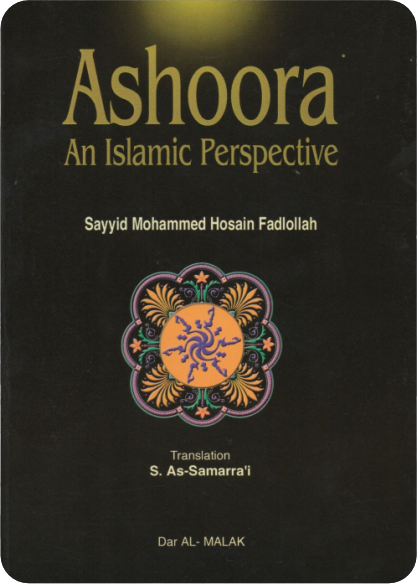Description
Ashoora¹ can be regarded as a school that balances the
Muslim personality, because it manifests all the
greatness of its individuals in their relationship with God,
and in their high spirituality, in that prophetic attitude
with each other and towards their enemies, and in their
demonstration of the Islamic concepts, whether on the
political level regarding the question of who should
become the ruler, or on the religious level in general.
Such concepts became stagnated in the minds of many
people so that they could no longer give them clarity in
seeing reality, something that could be repeated at any
time, in many forms. This is because history repeats
itself with regard to the continuous struggle between
truth and falsehood, which makes the commemoration of
Ashoora a responsibility in terms of following the role
model, a springboard from which to advance, and a
wealth of values from which to benefit. This is why the
Imams of Ahlul Bayt (as) wanted Ashoora to continue for
6
all time, so as to become the prophetic tree that
provides fruit to bring benefit to all of man’s essential.
People have added a lot of traditions to Ashoora, and
over time many of its elements have lost their dynamism
and, at various stages, they turned into mere rituals that
fail to encourage the consciousness to rise against
injustice. In some places, it has even become the
practice to torture oneself, and to neglect one’s
humanity, and some people have seized it as an
opportunity to instigate sectarian disputes, to vent
historical grudges and so on, which contradicts the
sacredness of the event and its sacred individual, and
does not conform to the Islamic attitude that approaches
everything from a standpoint of purity and faithfulness.
On this basis, his eminence the grand scholar Sayyid
Mohammed Hosain Fadlollah started – and for more than
fifty years has continued – to highlight the thought of
Ashoora, and likewise the emotions, to confirm its
Islamic identity that calls all Islamic sects to benefit from
its lessons in the present and the future, so that Muslims
rally around al-Hosain (as) as an Imam and symbol of
Islamic unity in both stance and act. His eminence
rejects any kind of diminishment of this great event,
including the forms that simply commemorate and do not
conform to its sacredness, that contradict the Shari’ah
7
and tarnish the pure Islamic image of Ahlul Bayt (as) in
the eyes of people.oof thgns ot Jiunt zabivold
His eminence has brought attention to the necessity of
developing the acting forms of commemoration, whether
in the theatre, cinema or otherwise, so as to enable
Ashoora to appeal to the biggest audience possible and
with the greatest effect possible, reflecting all those
truthful scenes that express the Islamic and humane
depth of Ashoora.
It is from the talks given by his eminence, some of which
were published in Min Wahy Ashoora and Hadith
Ashoora, that his son Ja’far compiled the thoughts
presented here so as to give a relatively comprehensive
image of Ashoora – its causes, nature, the forms of
commemoration and the theorisation of the duality of
emotion and thought in commemorating the Hosaini
cause – in a book that is small in size but big in the goal
aspired to.






Reviews
There are no reviews yet.